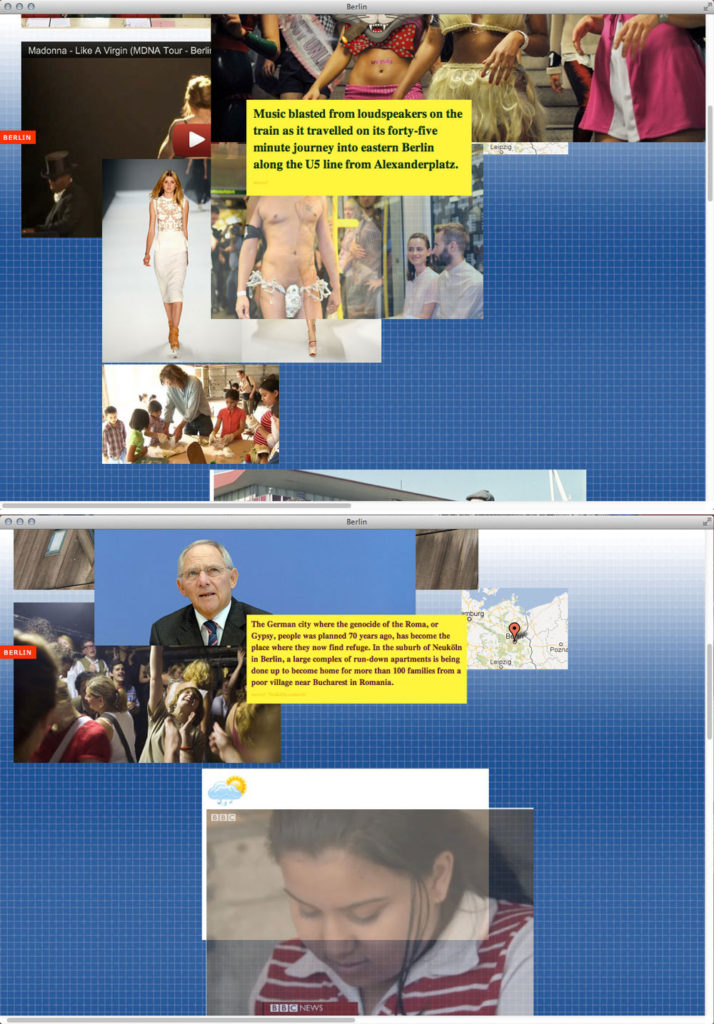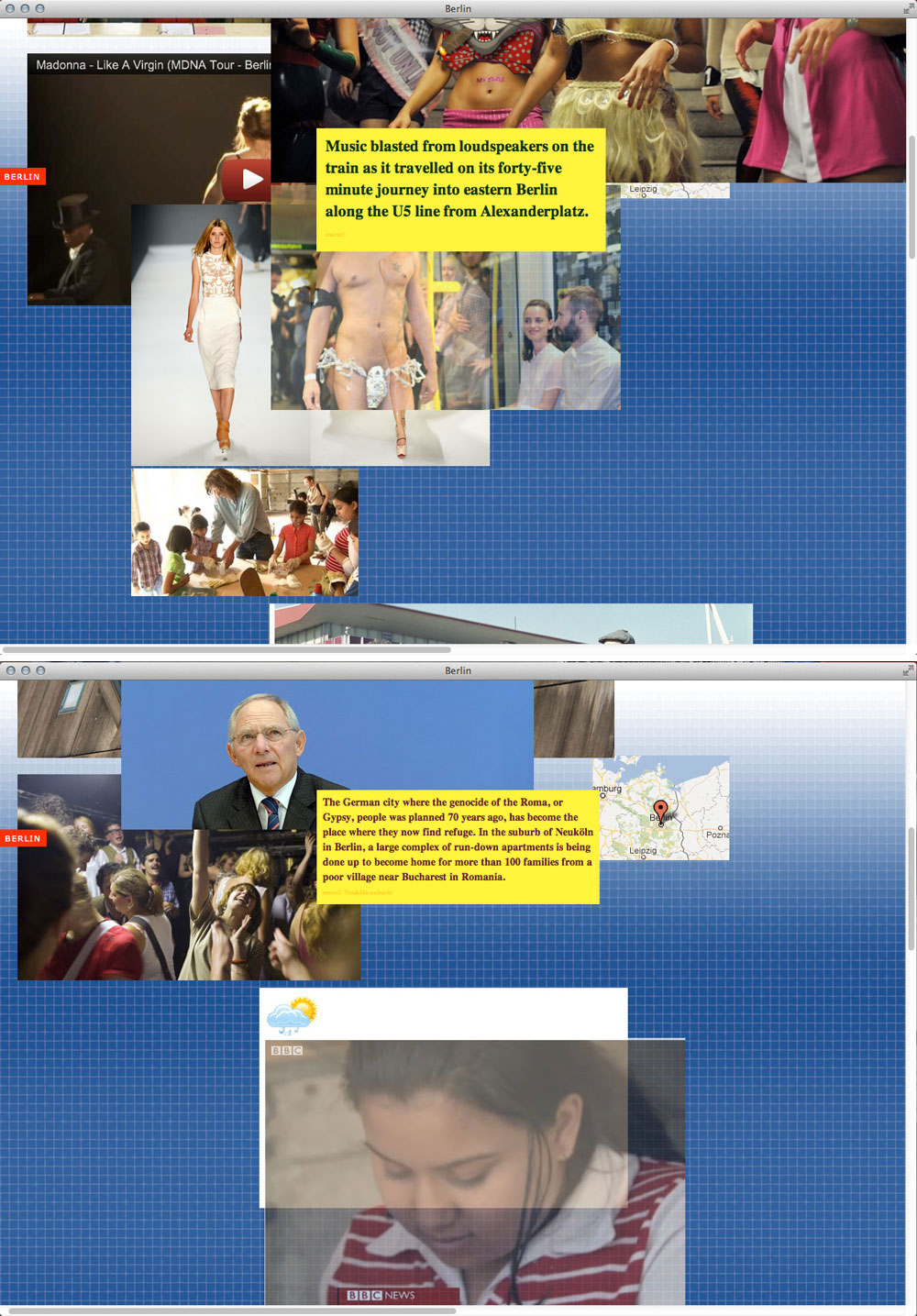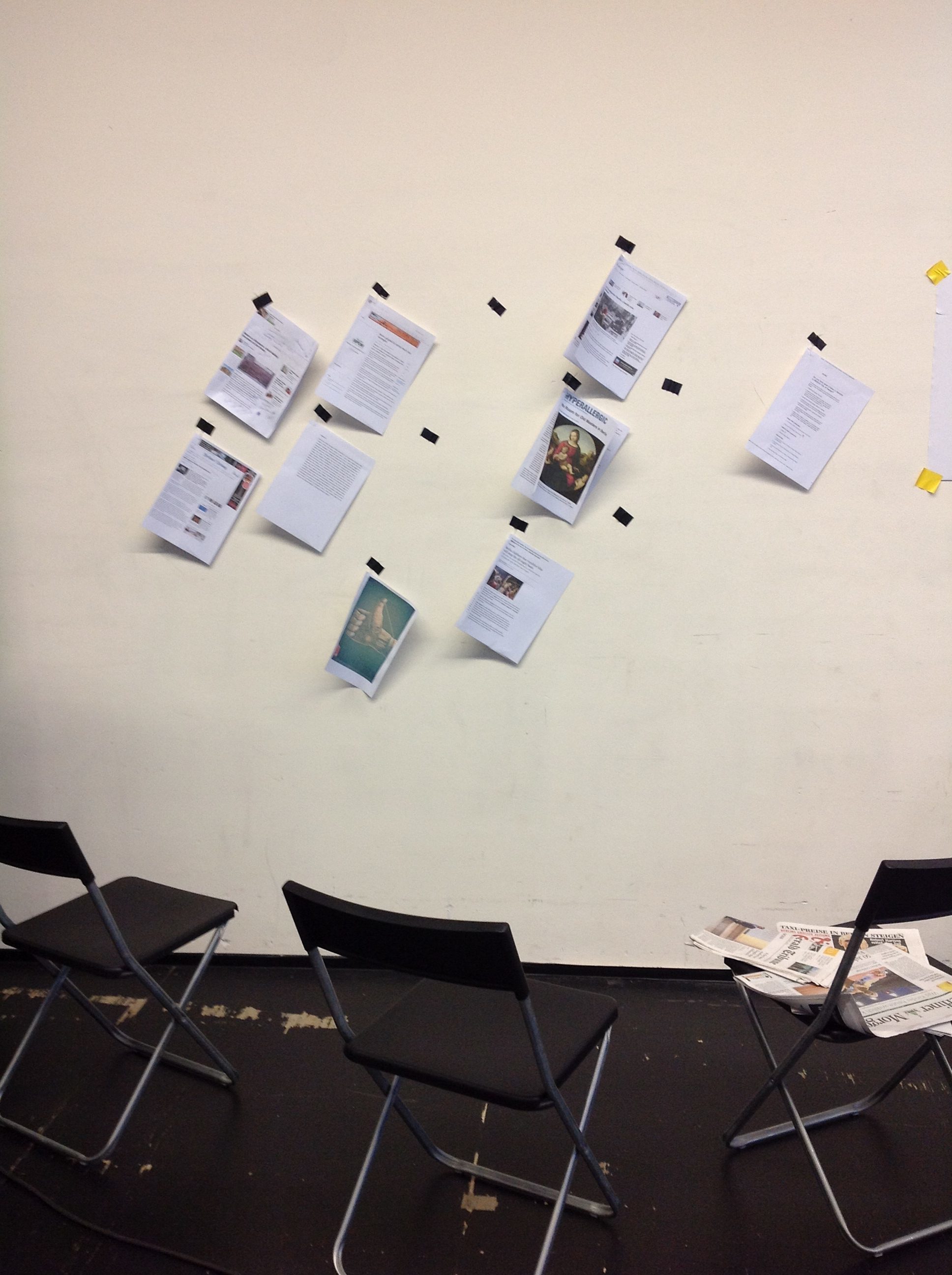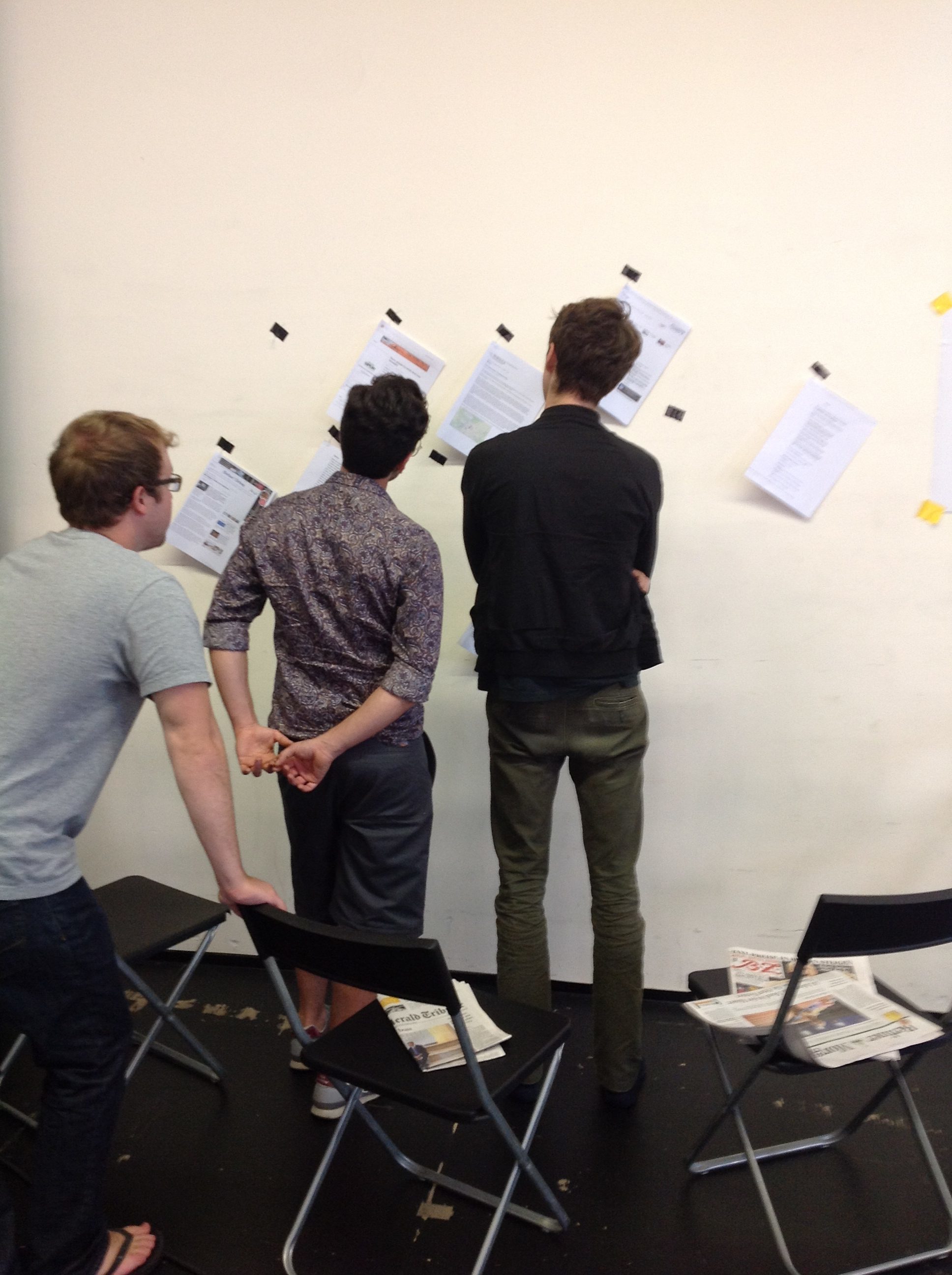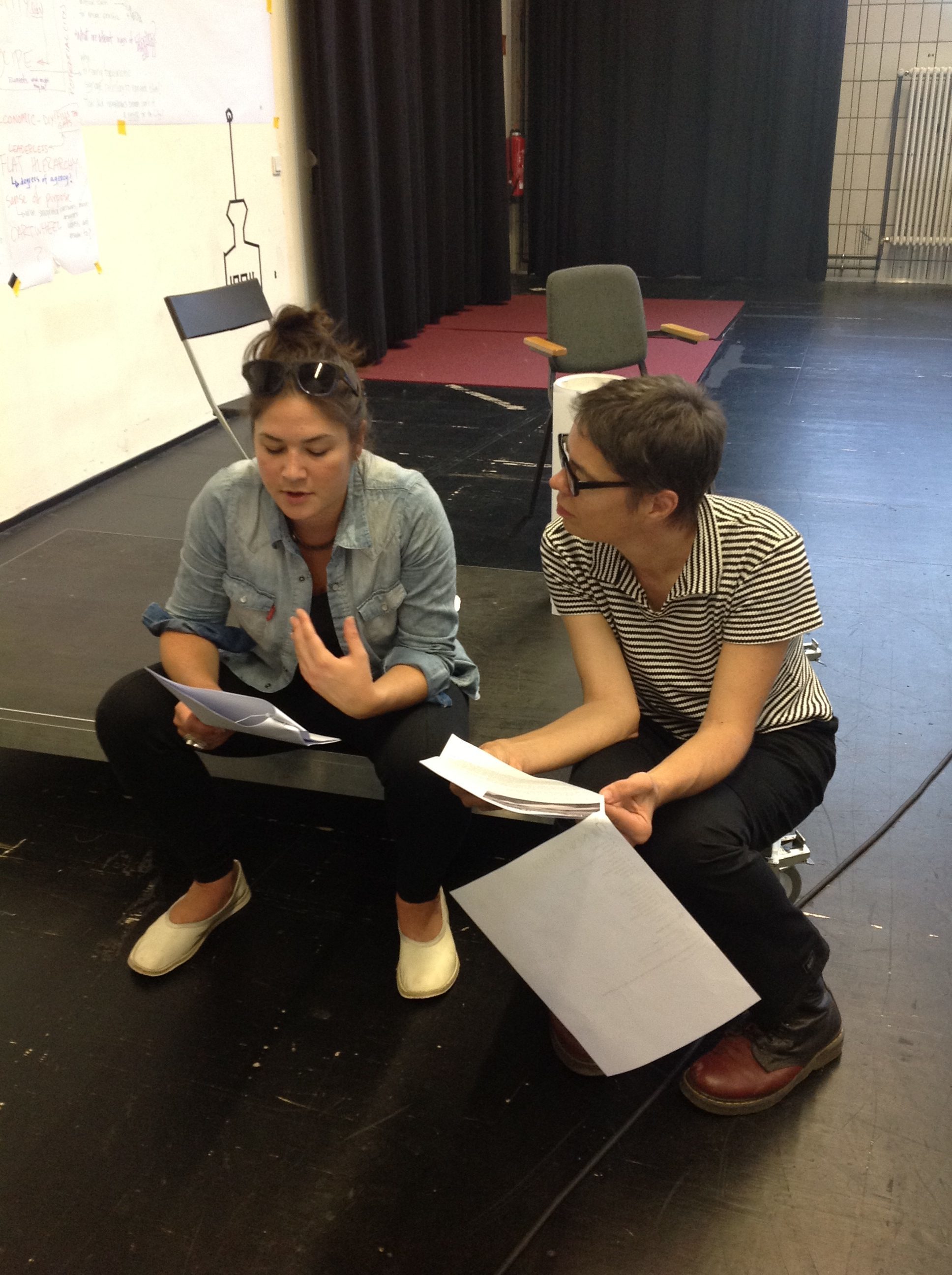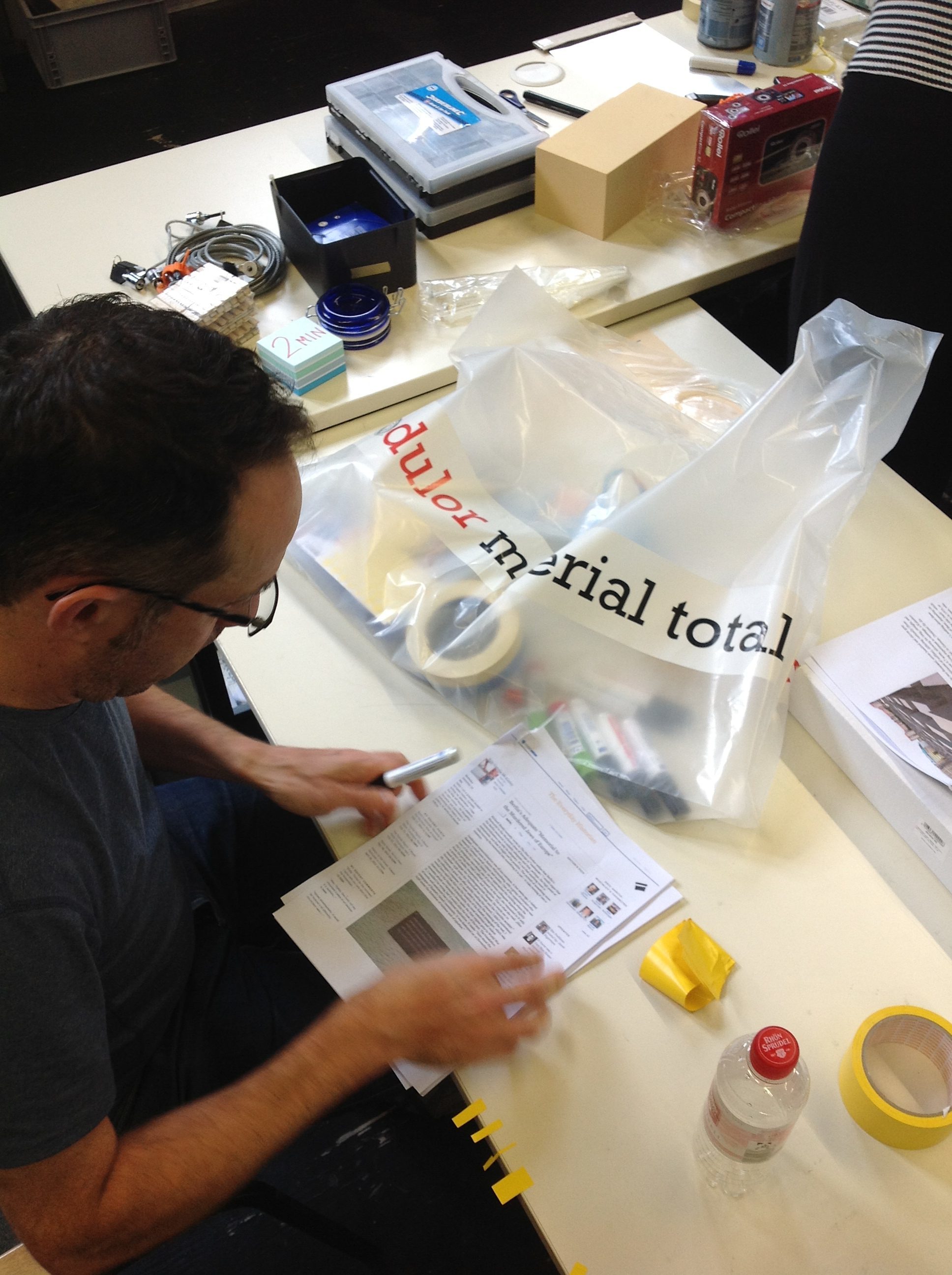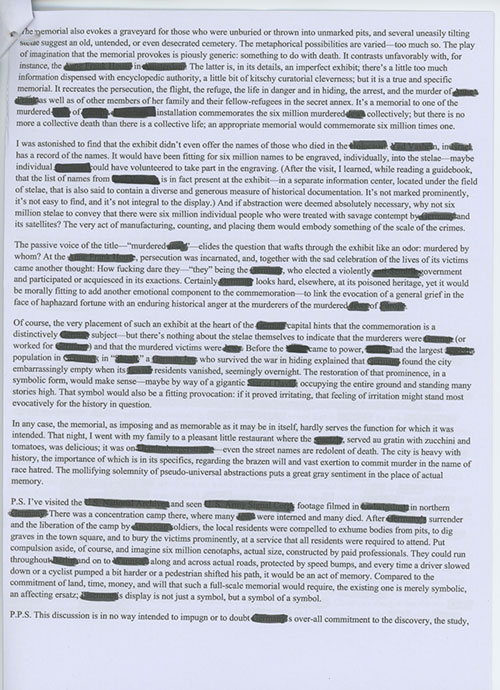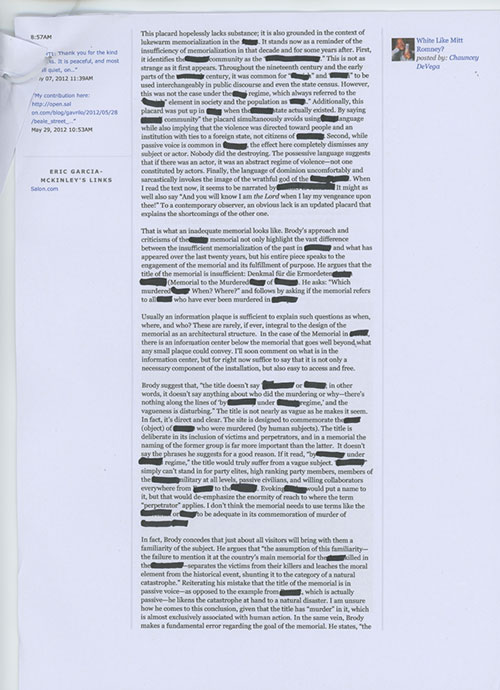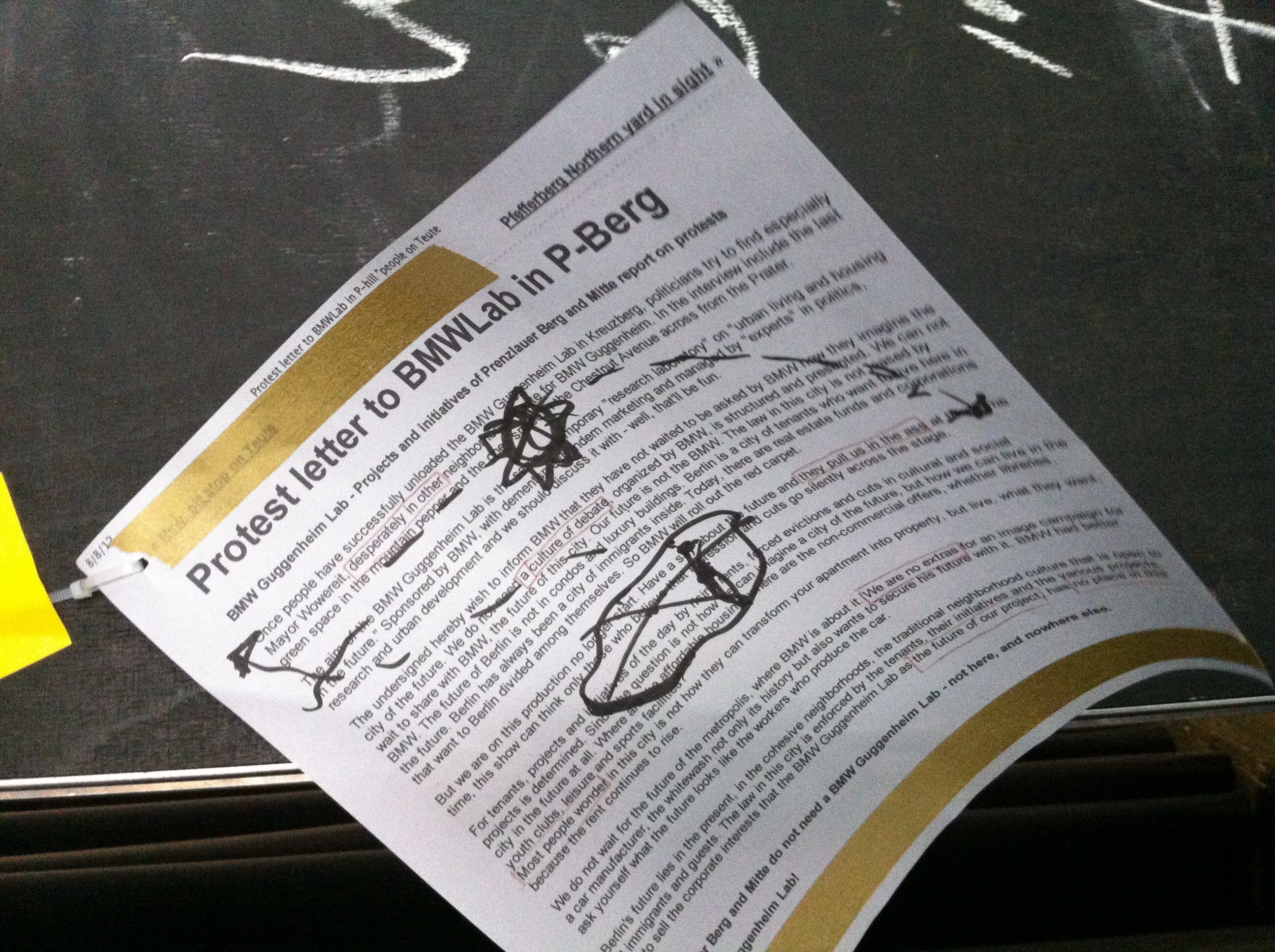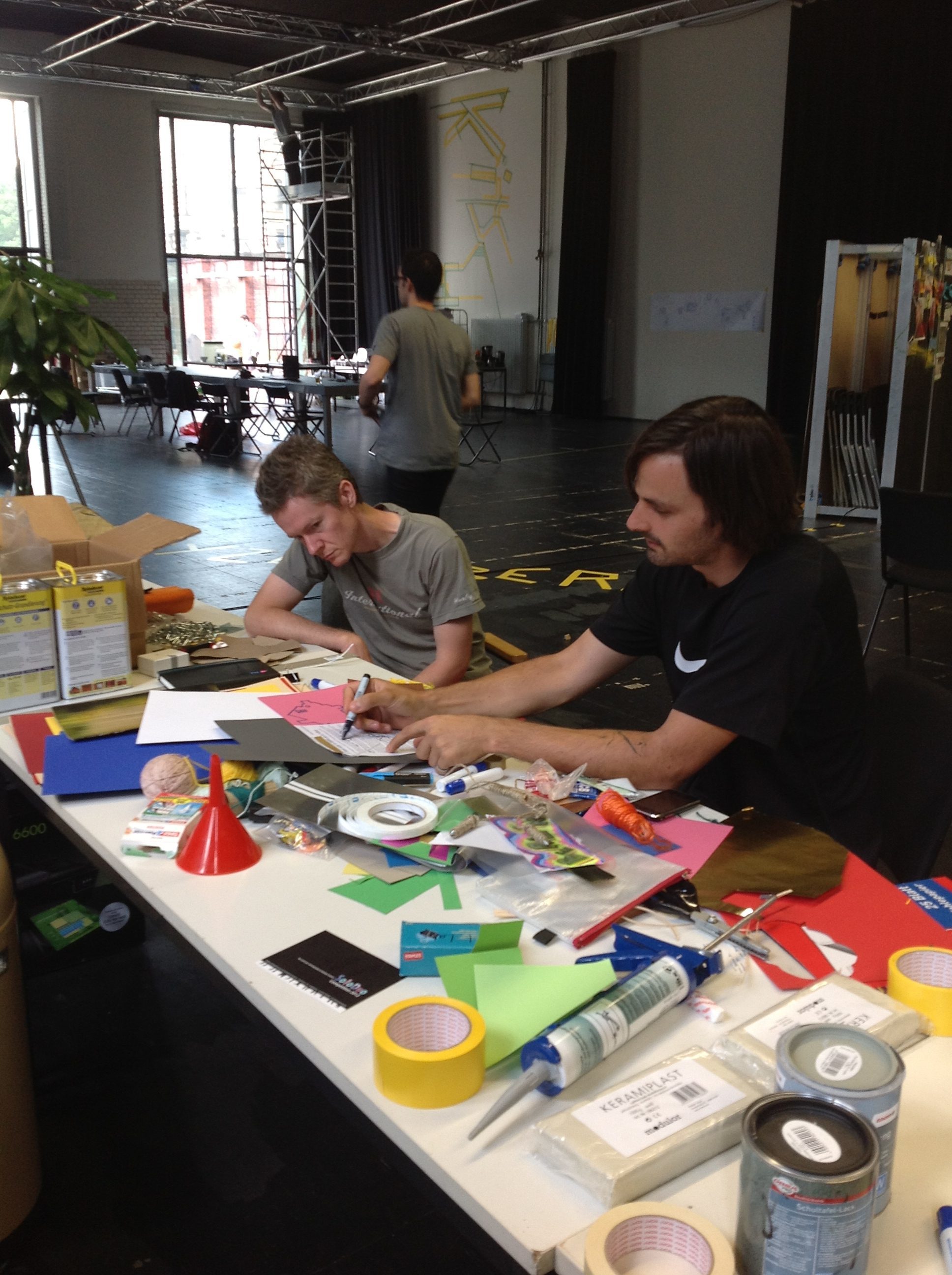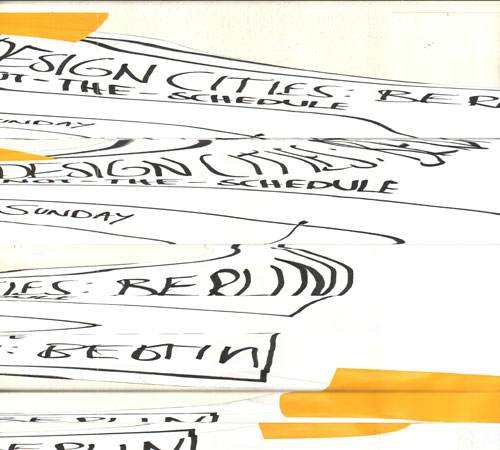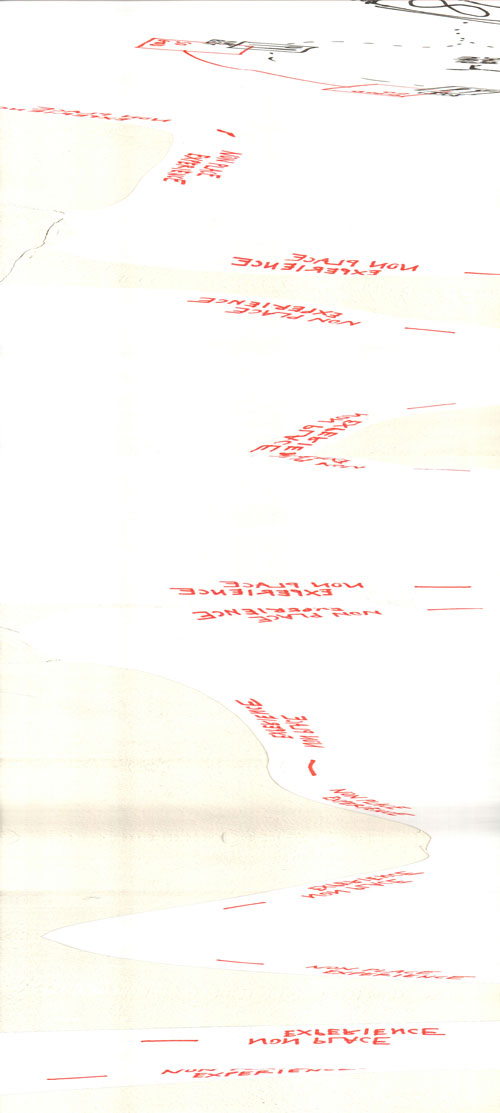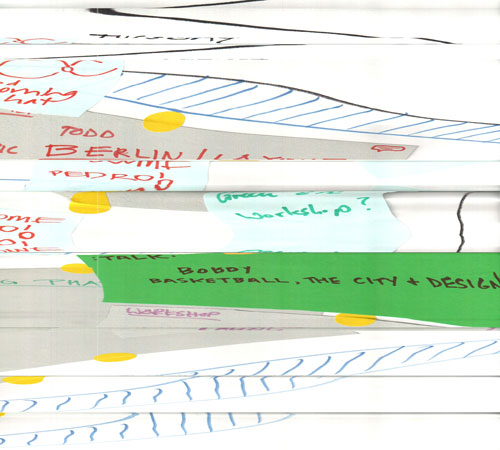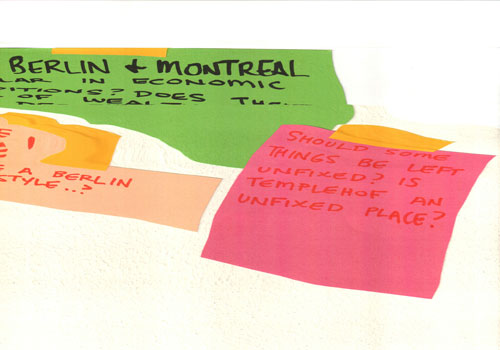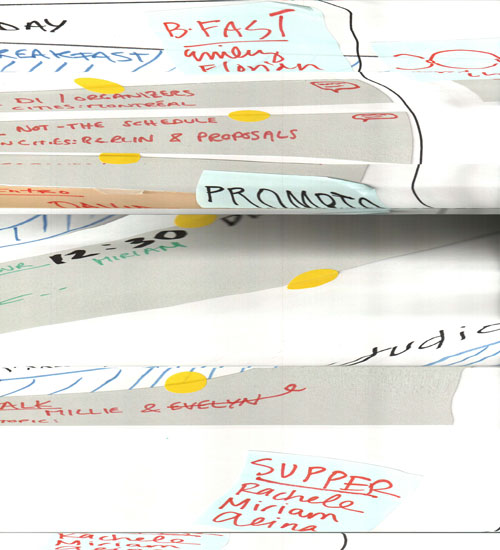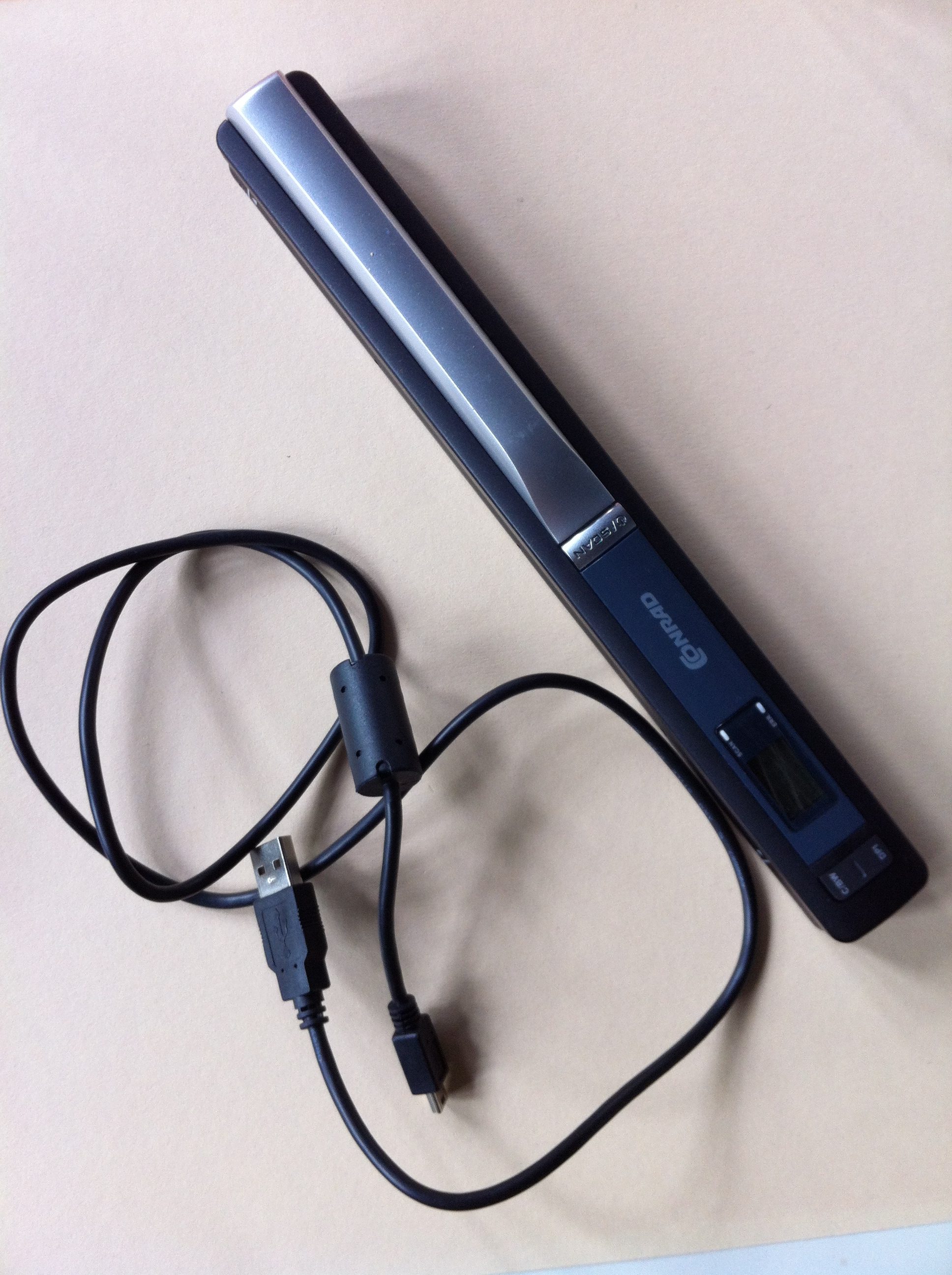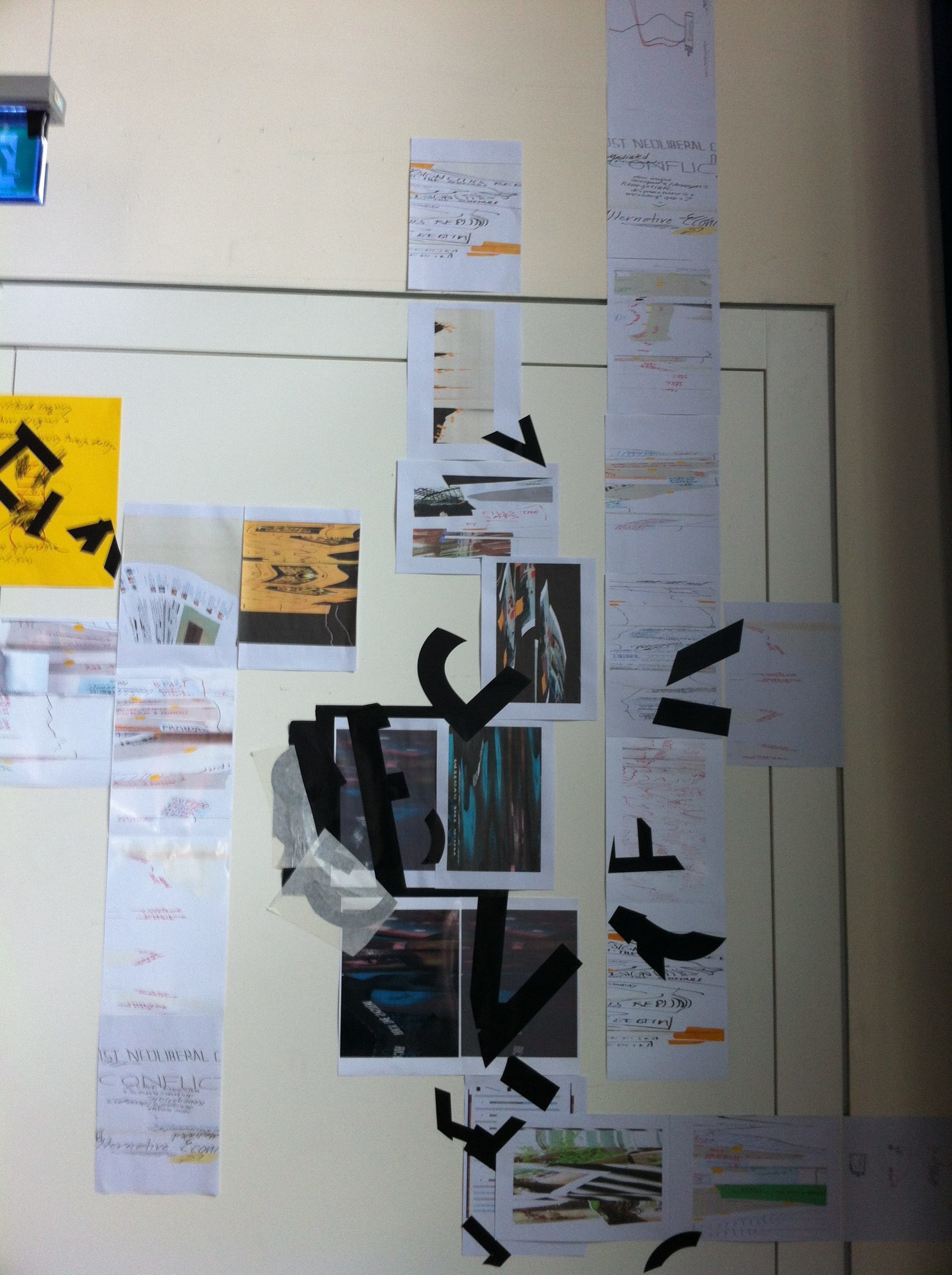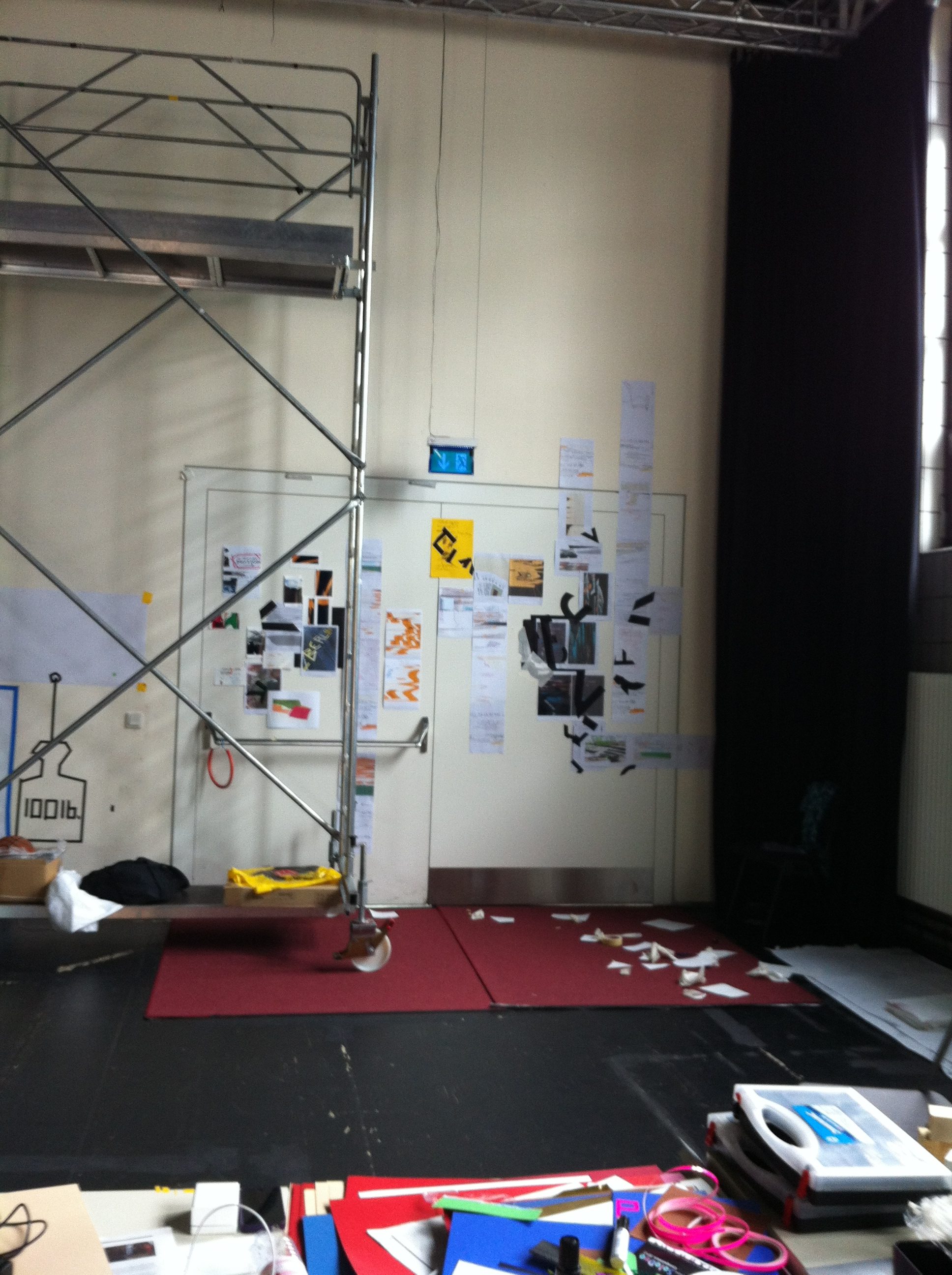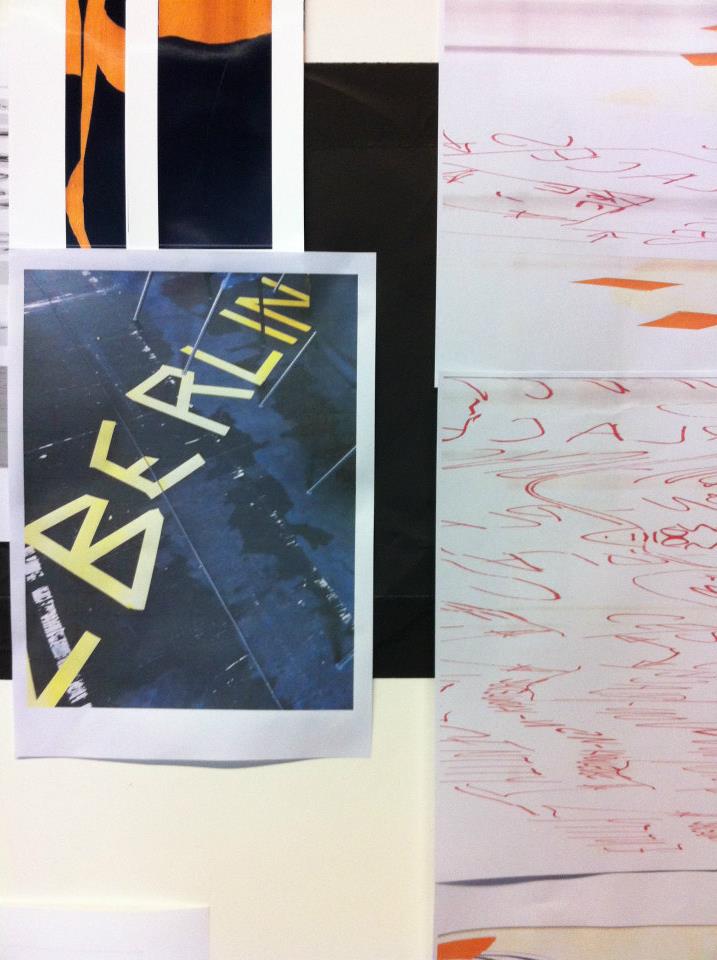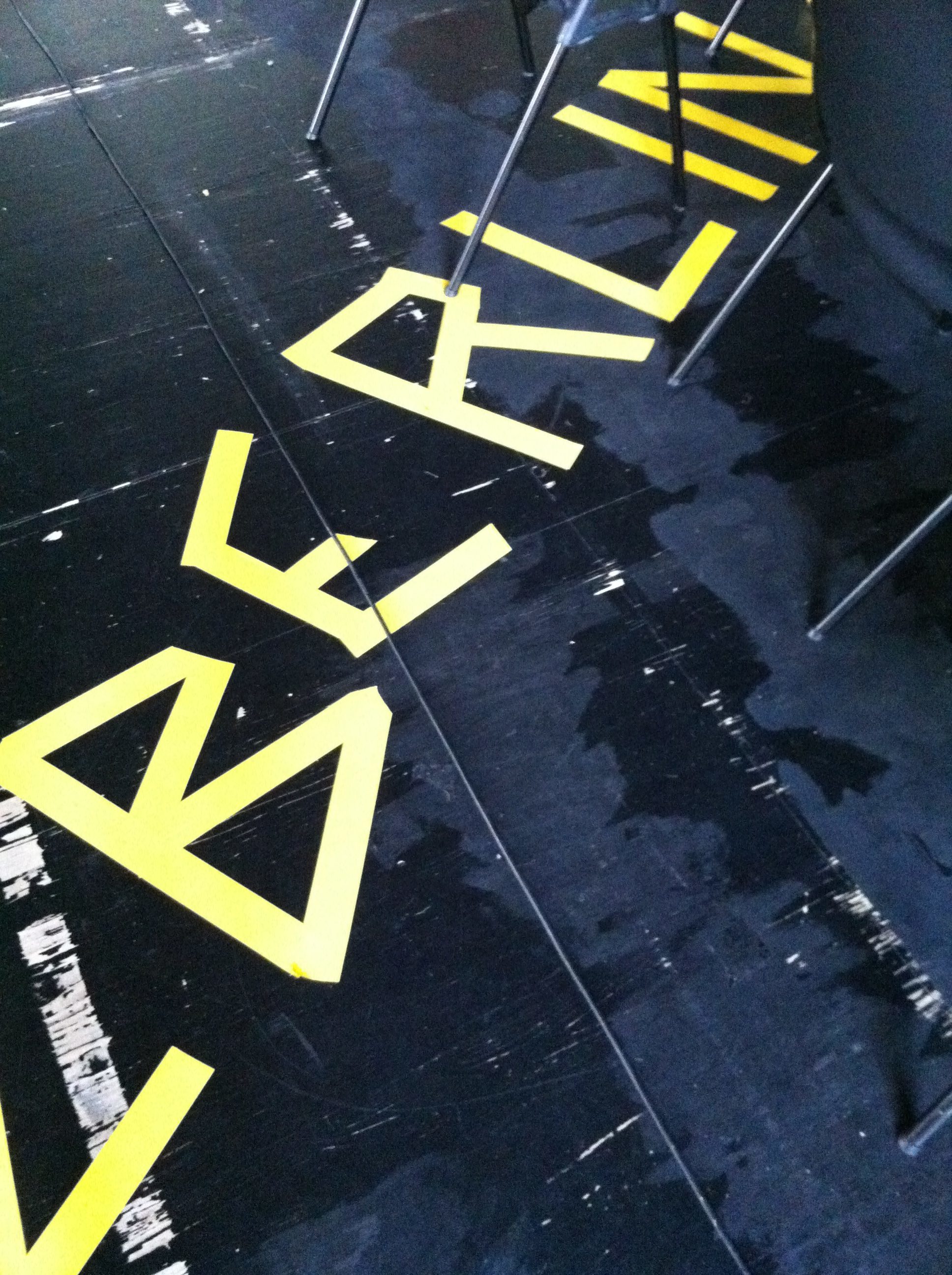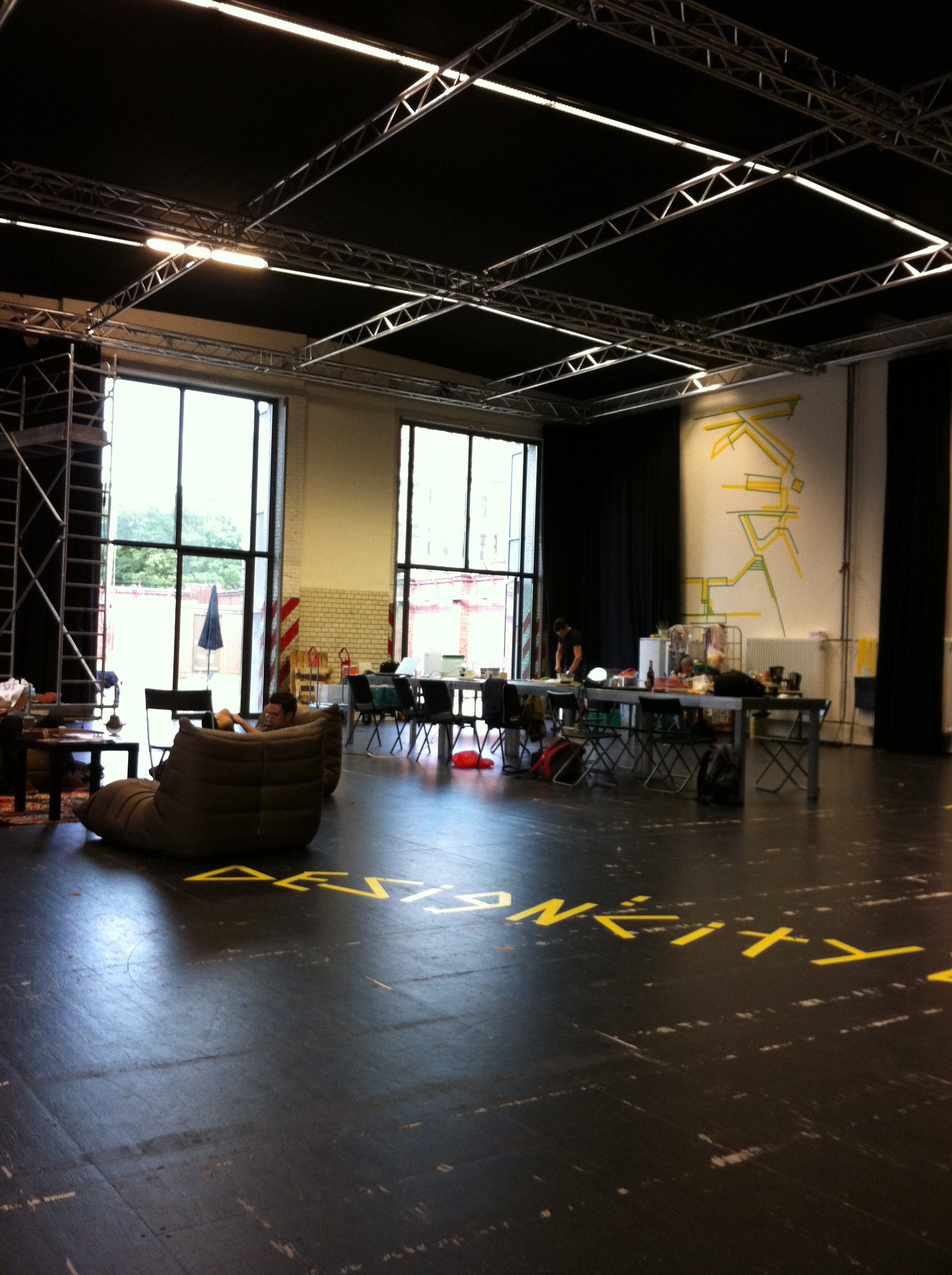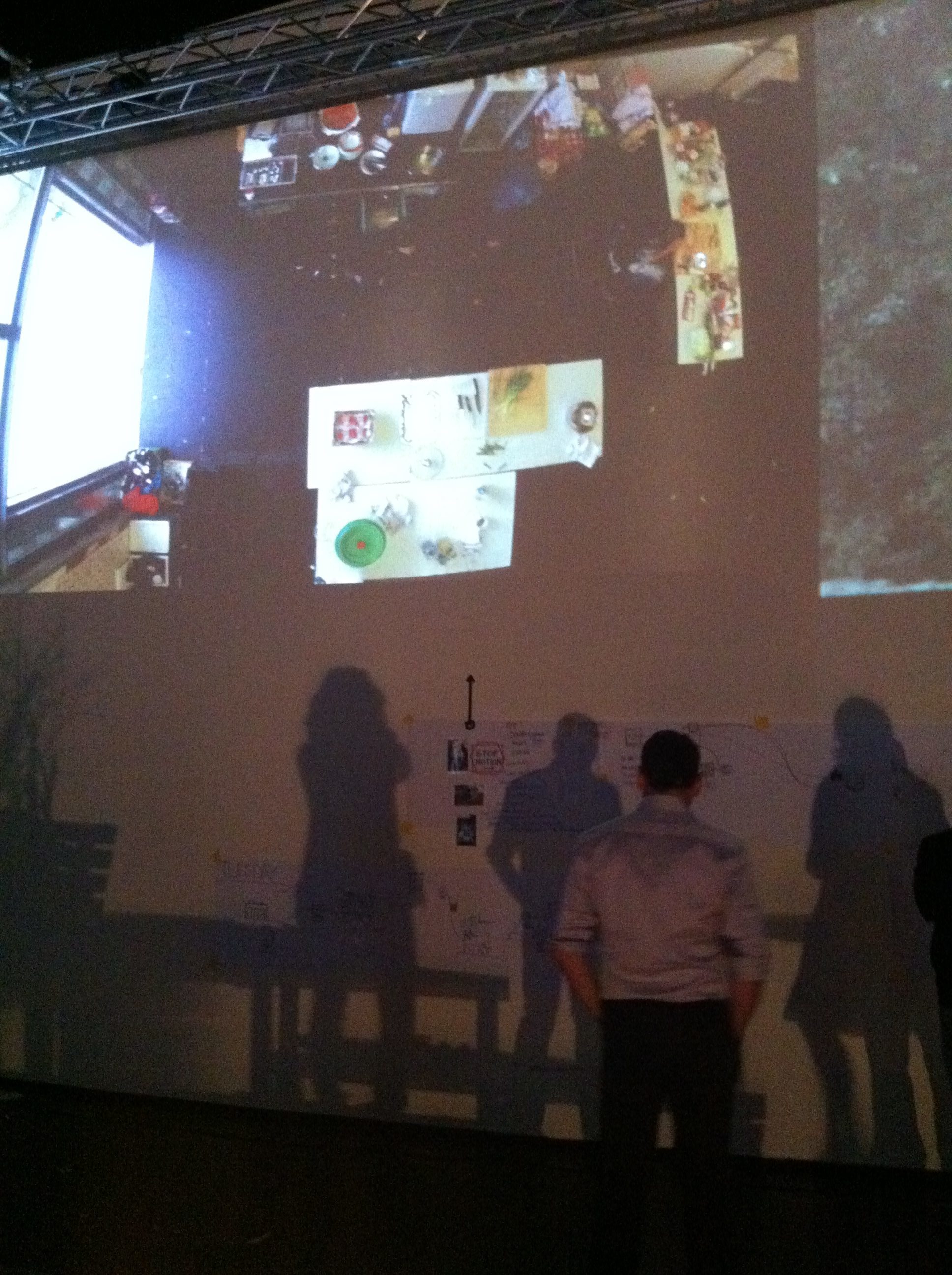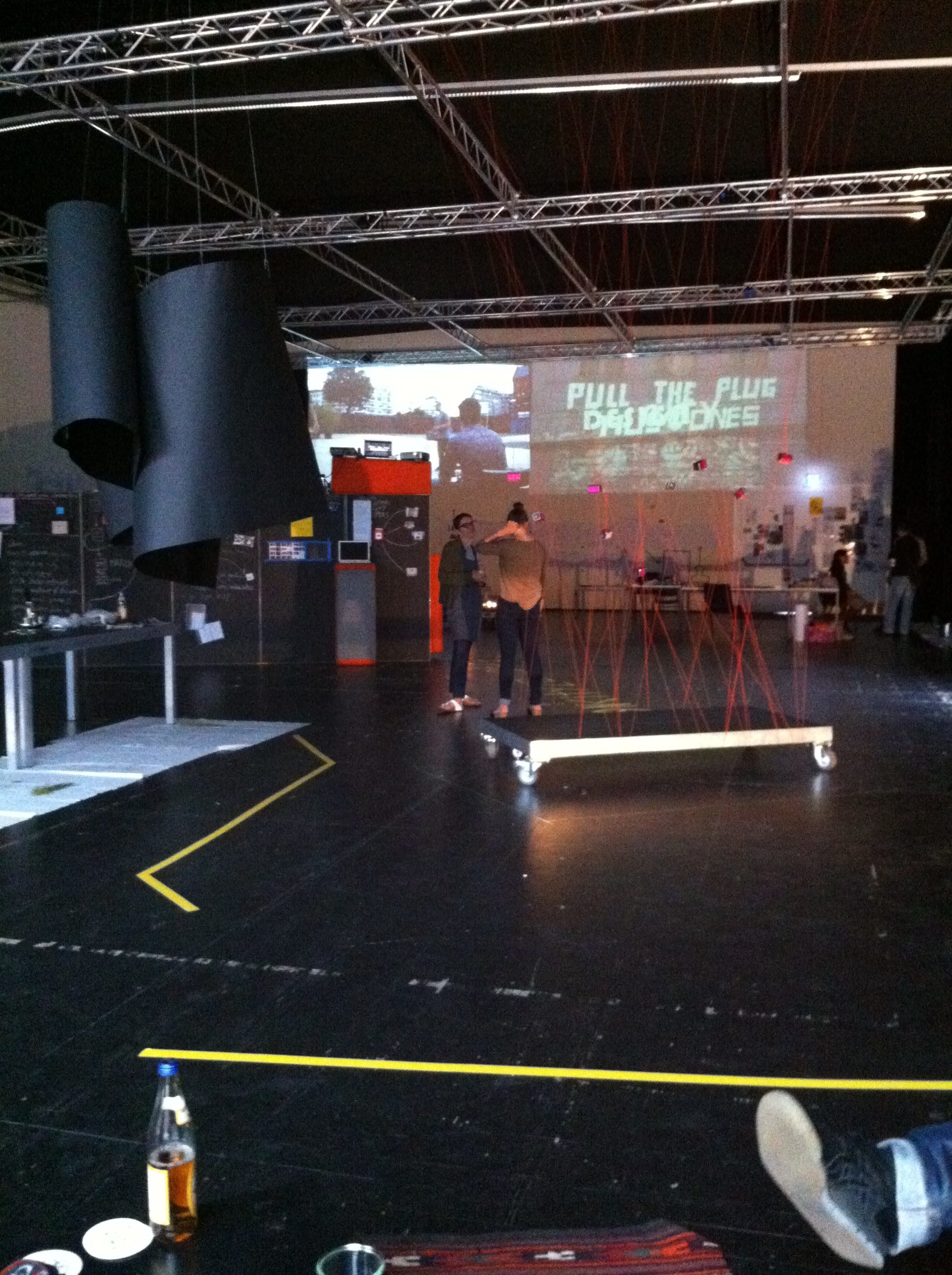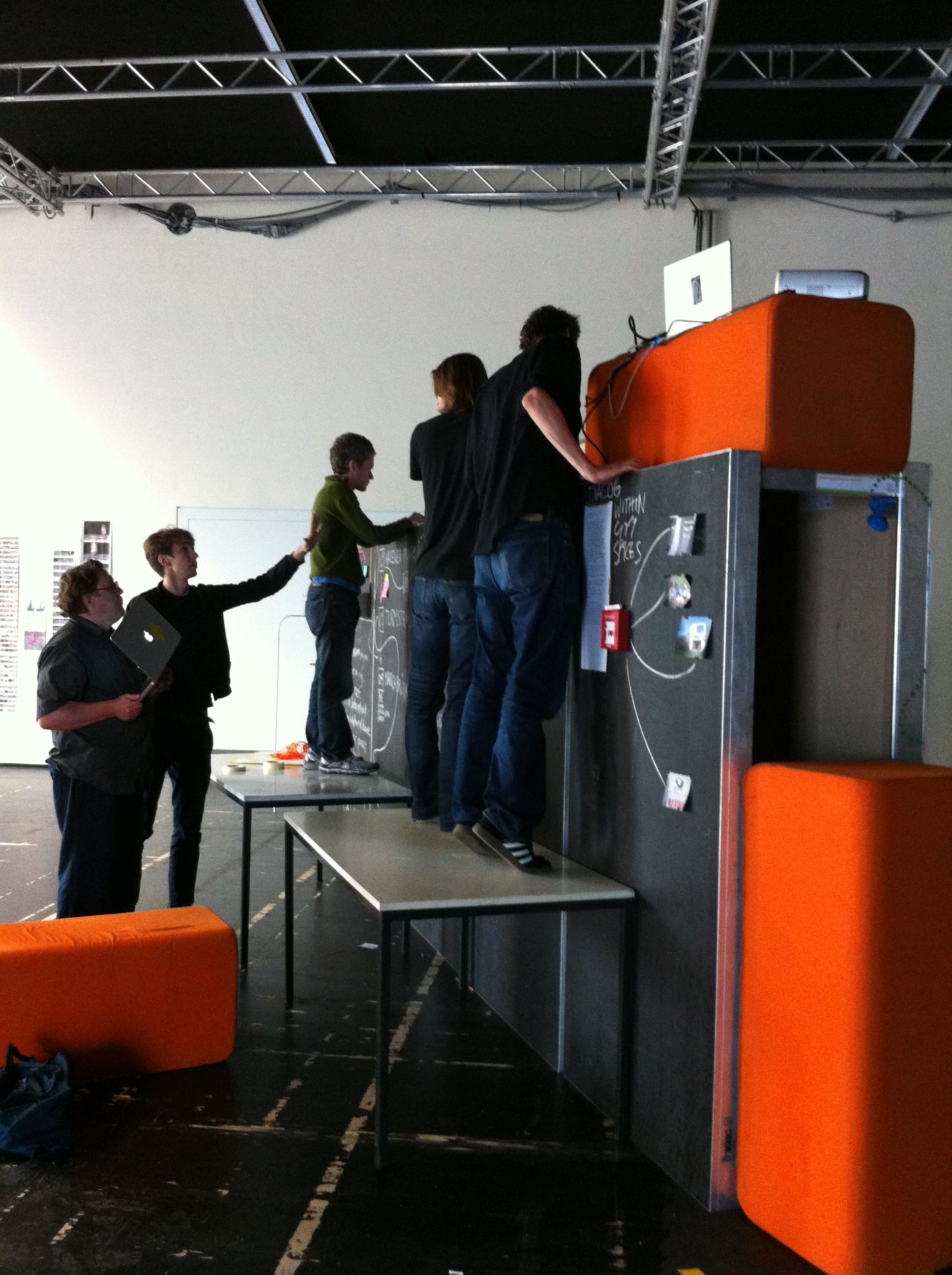DesignCity Berlin Expressive Tools
August 6–11, 2012. Once a Day, Berlin presentation and workshop in Berlin, Germany as part of DesignInquiry Design City.
Expressive Tools, Hergestellt in Berlin (Made in Berlin)
1. Interpretations of Conflict
Workshop led by Rachele Riley and Minh Le, Wednesday, August 8, 2012
Participants were asked to investigate a story of conflict in the Berlin news and to design a response that enables it to be shared with others.
We provided articles from my web-based mapping of Berlin, Once a Day Berlin, three German newspapers, and two Berlin community activist stories from Minh’s research.
One group analyzed the use of language in two opposing reviews of the ‘Memorial to the Murdered Jews of Europe’ (Amery Calvelli, Alina Naujokaitis, and Joshua Singer). By blocking out specific key words in the texts that would identify the subject as the Holocaust Memorial in Berlin, the modified articles bring emphasis to the emotional tone of the authors’ words, shift the reader’s experience, and highlight the relevance of context.
Another group, designed a subversion of activism (Bobby Campbell and Florian Sametinger) working from a Kreuzberg community protest letter of the BWM Guggenheim Lab. Their satirical response, in which they formed a hypothetical development company and wrote a press release, demonstrates how the familiar issue of gentrification might be codified, easily leading to misperceptions of a neighborhood’s resilience and its systems of power.
2. Expressive Scanning
In the studio at DesignCity Berlin, I used the hand-held scanner to interpret the week’s developments and activities: the mappings, photos, and other production taking shape around the room. My goal was not to record the material objectively but rather to record the gesture of capturing it, along with reference to the source material. I ran the scanner across the surfaces—sideways, backwards and forwards, quickly and slowly, lifting it up and placing it back down again mid-scan—and the movement of this activity felt like the movement of drawing. In every instance the scanner would blink: ‘ERR’ for error, for having used it the wrong way. I call them ‘Expressive Scans.’ They are partial distortions and exaggerations; they embody a source material (the map, print, photo, elements of the original thing I scanned) and the gesture of the moment in which they were captured. I could never truly predict what the outcome of each scan would be and so, embracing the unknown, I made over one hundred of them.
Currently I am exploring ways to incorporate the tool and the role of performing drawing into my project, The Evolution of Silence (on Yucca Flat of the Nevada Test Site), for example, to visualize the miles of coaxial cables that were installed to transfer data from the site of each nuclear detonation to a computer, several feet away. The force of each blast disrupted the cable lines, and they lie scattered and twisted as fragments and in long stretches across the landscape. Instead of drawing these disconnected lines, I am using ‘expressive scanning,’ to perform the drawing, to create a disruption and capture it as it happens in that instant.
More documentation online at the Design Inquiry Design City: Berlin.
